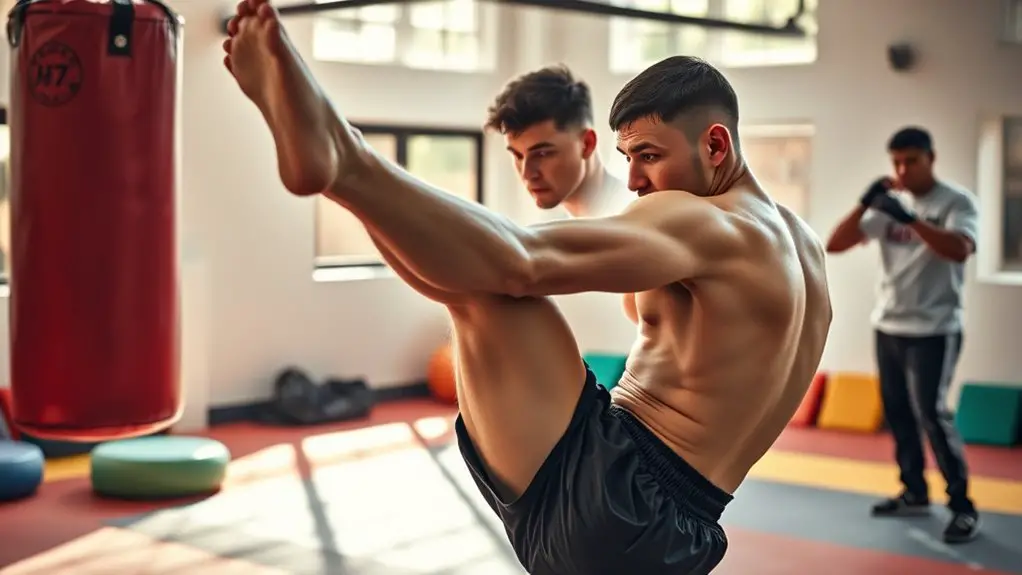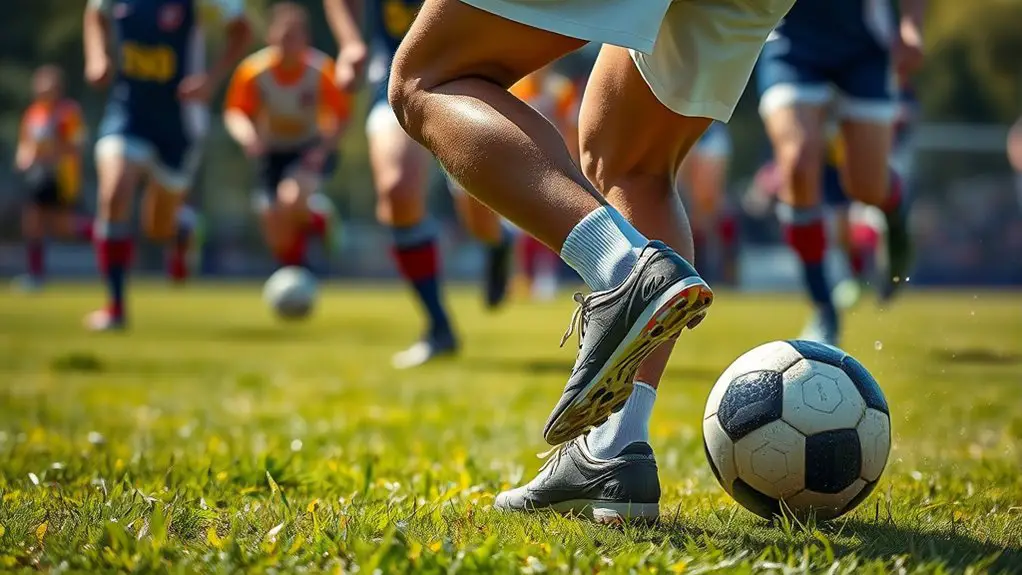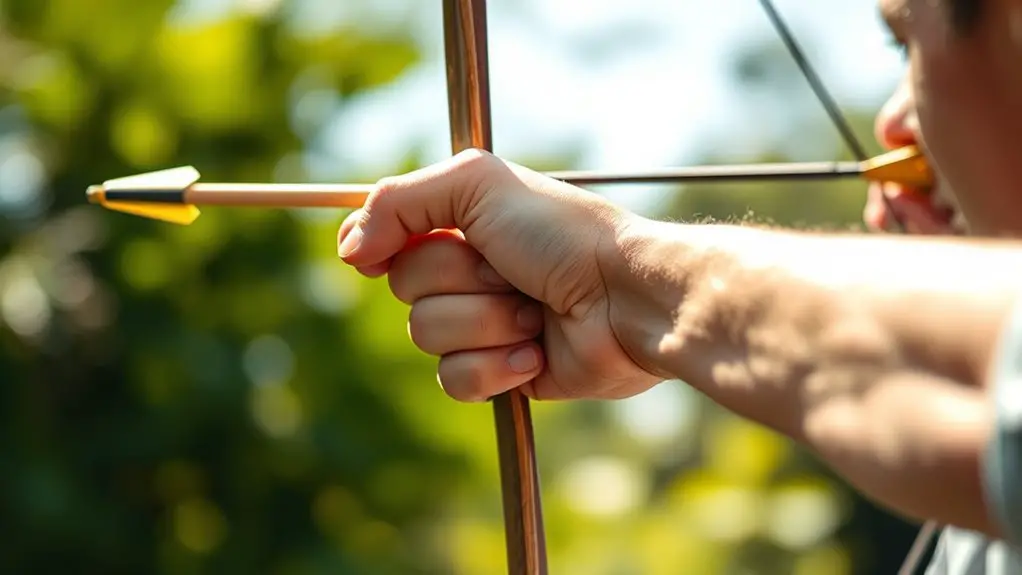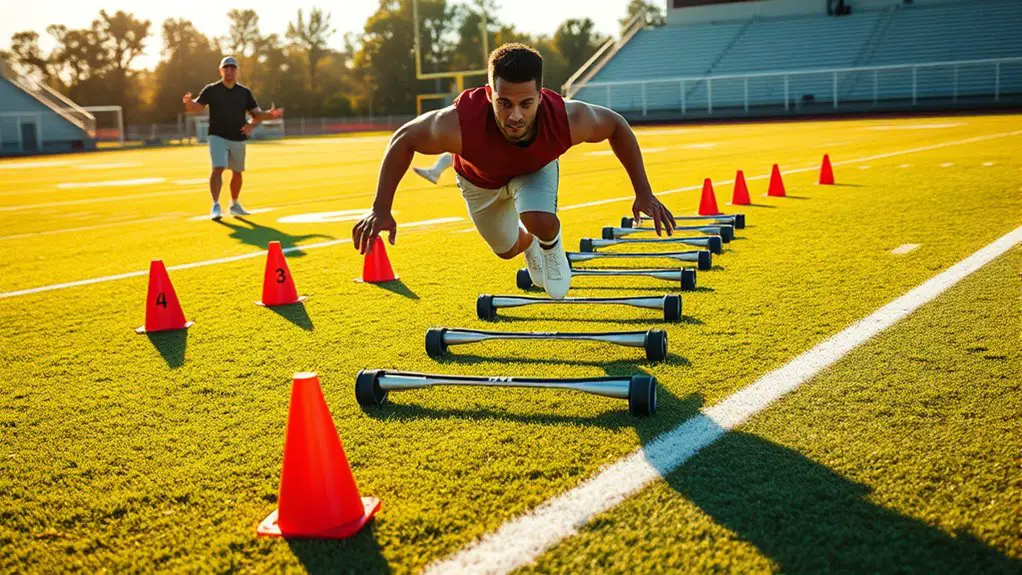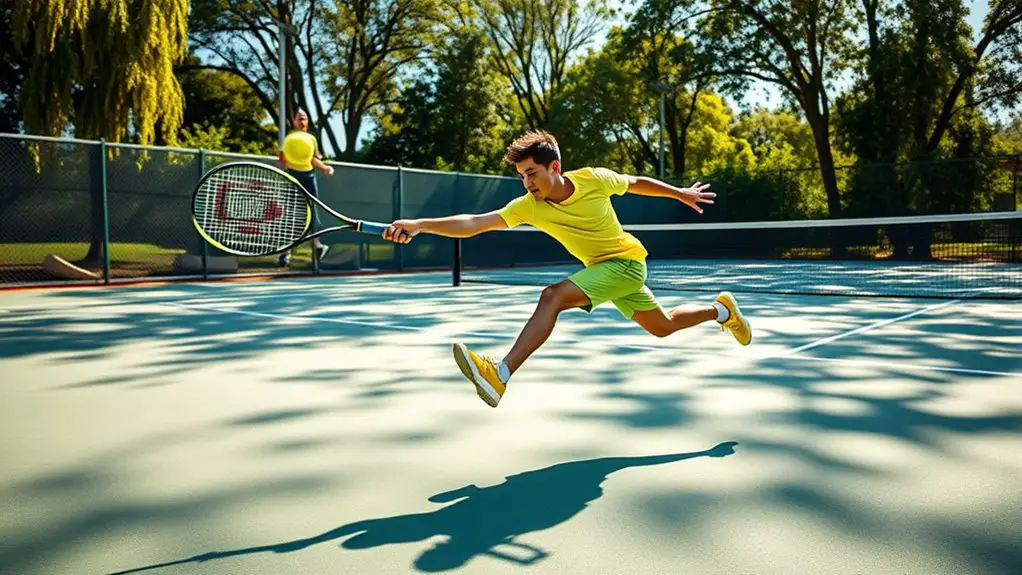To incorporate martial arts into your athletic training, start by evaluating your sport's demands and choosing a suitable style, like boxing for striking sports or jiu-jitsu for grappling. Integrate martial arts techniques into your warm-ups and drills, focusing on coordination and agility. Balance your schedule with technique, sparring, and conditioning, while allowing for rest days. Emphasize mental resilience through discipline and adaptability. There are plenty of effective strategies you can discover to enhance your approach.
Understanding the Benefits of Martial Arts for Athletes
When you incorporate martial arts into your athletic training, you're not just adding a new skill; you're enhancing your overall performance. Martial arts teach you discipline and focus, sharpening your mental edge. You'll develop agility and flexibility, essential for any sport. The dynamic movements improve your coordination, allowing you to react faster in competition. Plus, martial arts build strength through varied techniques, helping you gain a physical advantage. You'll also experience the freedom that comes from mastering self-defense, giving you confidence both on and off the field. Finally, the community aspect fosters camaraderie, reminding you that you're part of something bigger. Embrace the journey, and watch how martial arts elevate your game to new heights.
Selecting the Right Martial Art for Your Sport
How do you choose the right martial art for your specific sport? First, think about your sport's demands. If you're into striking sports, consider boxing or Muay Thai for speed and precision. For grappling, Brazilian Jiu-Jitsu or judo can enhance your ground game. Look at your goals, too. Do you want improved agility, strength, or mental focus? Certain martial arts offer unique benefits that align with those aspirations. Also, consider the culture and philosophy behind each art; it can influence your training mindset. Finally, try out a few classes to see what resonates with you. The right fit will not only boost your athletic performance but also free your spirit, allowing you to thrive both mentally and physically.
Incorporating Martial Arts Techniques Into Your Training Routine
After selecting a martial art that aligns with your sport and personal goals, the next step is to weave those techniques into your training routine. Start by incorporating basic movements and stances, like footwork and strikes, into your warm-ups. This not only enhances your agility but also improves your coordination.
You can add specific drills that mimic game situations, allowing you to practice techniques while maintaining your sport's intensity. Consider shadowboxing or partner drills to refine your skills without the pressure of competition.
Don't forget to mix in flexibility and balance exercises inspired by martial arts; they'll enhance your overall performance. By integrating these techniques, you'll not only diversify your training but also foster a liberating sense of empowerment and mastery over your body.
Developing Mental Resilience Through Martial Arts
While training in martial arts, you'll discover that the journey goes beyond physical skill; it's also about building mental resilience. As you face challenges, whether it's mastering a technique or sparring with a partner, you'll cultivate the grit to overcome obstacles. Here's how martial arts can enhance your mental strength:
| Aspect | Benefit | How to Apply |
|---|---|---|
| Focus | Improved concentration | Practice meditation techniques |
| Discipline | Consistent training habits | Set clear goals |
| Adaptability | Better response to unexpected events | Spar with various partners |
| Confidence | Increased self-belief | Celebrate small victories |
| Stress Management | Enhanced emotional control | Engage in breathing exercises |
Embrace these lessons, and you'll not only grow as an athlete but also as a resilient individual.
Creating a Balanced Training Schedule With Martial Arts
Building mental resilience through martial arts is a powerful foundation for any athlete, but to truly maximize your growth, a balanced training schedule is key. Start by evaluating your current commitments and identifying time slots where you can incorporate martial arts training without overwhelming yourself. Aim for a mix of technique, sparring, and conditioning sessions, ensuring you're not neglecting other essential aspects of your athletic development.
Don't forget to schedule rest days; they're important for recovery and growth. Listening to your body is crucial, so adjust your schedule as needed. By blending martial arts with your existing training, you'll create a dynamic routine that fosters freedom in your athletic journey, allowing you to thrive both mentally and physically.
Frequently Asked Questions
Can Martial Arts Improve My Agility and Speed as an Athlete?
Absolutely, martial arts can boost your agility and speed. The dynamic movements and quick reflex training you'll engage in sharpen your coordination, enhance footwork, and improve overall athletic performance, making you a more versatile competitor.
How Often Should I Practice Martial Arts for Optimal Results?
To achieve ideal results, you should practice martial arts at least three times a week. Consistency builds skill, enhances agility, and boosts your overall athletic performance, giving you the freedom to excel in your sport.
Are There Age Restrictions for Starting Martial Arts Training?
There aren't strict age restrictions for starting martial arts; you can begin whenever you feel ready. Many schools welcome all ages, so don't let age hold you back from discovering your potential and freedom.
Can Martial Arts Help Prevent Sports-Related Injuries?
Yes, martial arts can help prevent sports-related injuries. They improve flexibility, strength, and coordination, which can enhance your overall athletic performance. Plus, they teach you body awareness, vital for avoiding injuries during any physical activity.
Should I Focus on One Martial Art or Multiple Styles?
Focusing on one martial art hones your skills, yet exploring multiple styles broadens your understanding. It's a balance between mastery and versatility. You'll find freedom in choosing what resonates with your passion and athletic goals.
